כללי
תחבורה
אנשים
אירוח
אוכל ושתייה
ביקור באתרים
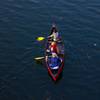 מה לעשות בפורטוגל?
מה לעשות בפורטוגל?
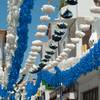 Are there any festivals in Portugal?
Are there any festivals in Portugal?
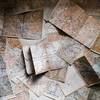 What are the best tours to take in Portugal?
What are the best tours to take in Portugal?
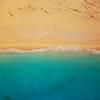 What are the best beaches in Portugal?
What are the best beaches in Portugal?
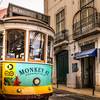 Are Lisbon and Porto city cards worth buying?
Are Lisbon and Porto city cards worth buying?
 What museums in Lisbon offer free entry?
What museums in Lisbon offer free entry?
 מה אני צריך לדעת על גלישה בפורטוגל?
מה אני צריך לדעת על גלישה בפורטוגל?
משפטי
כסף
בטיחות ובריאות
נסיעות משפחתיות
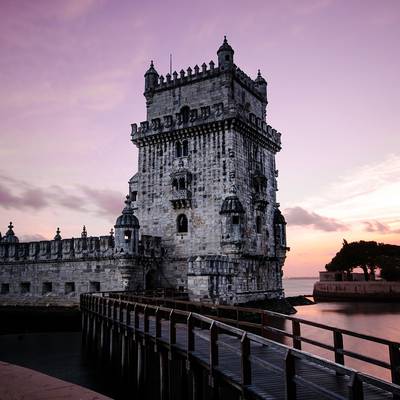
What to see in Portugal?
Despite being a quite small country, Portugal has countless tourist attractions which are impossible to cover in just one article. Below you will find some of the most exciting things Portugal has to offer.
Alcobaça Monastery. It’s a Roman Catholic Monastery located in the town of Alcobaça, in central Portugal. It was founded by the first Portuguese King, Afonso Henriques, in 1153, and maintained a close association with the Kings of Portugal throughout its history. The church and monastery were the first Gothic buildings in Portugal, and, together with the Monastery of Santa Cruz in Coimbra, it is one of the most important of the medieval monasteries in Portugal.
University of Coimbra. The University of Coimbra is one of the oldest, continuous universities in Europe, having been established in 1290. It also is one of the largest universities in Portugal, with approximately 20,000 students. There are many sections of interest within the university complex. Built in the early 18th century at the instigation of King Joao V, the library Biblioteca Joanina is a fine example of Baroque architecture. The Sala dos Capelos, the original throne room, is where the doctorates are awarded.
Capela dos Ossos. The Capela dos Ossos would appear to come straight out of a Halloween movie, but, in reality, it was a simple solution by 16th century monks on what to do about too many cemeteries taking up space in Evora. They moved the human remains to a special chapel, known as Bone Chapel, where the bones decorate the interior of the chapel. The chapel is part of the Gothic Church of St. Francis. It’s estimated that 5,000 skeletons, including skulls, adorn the chapel walls and ceiling.
São Jorge Castle. The São Jorge Castle is one of the top tourist attractions in Lisbon as it can be seen from all over the city. It dates back to Roman times, though the Moors rebuilt the fortifications in the 10th century. The castle was freed from Moorish rule in 1147 during the Siege of Lisbon in the Second Crusade. It later served as the residence of King Alfonso III. The castle has been destroyed and rebuilt several times. Today, walls and 18 towers that visitors can climb remain.
Obidos Castle. This castle is an impressive structure that sits on a hill at Obidos, a small city that dates back to Roman times on Portugal’s Atlantic coast. The Moors built the castle sometime in the eighth century. It was remodeled around the 14th century and a keep was added. The castle today houses a luxury pousada hotel. A traditional medieval market takes place in the castle every July.
Praia da Marinha. Praia da Marinha is considered one of the most beautiful beaches in Portugal. Located in the Atlantic coast region of Algarve, the beach is flanked by gorgeous blue waters on one side, and sandy beaches and high cliffs on the landside. Also known as Navy Beach, it is a small cove that is used extensively as an image in travel brochures. The beach’s clear waters make it a good place for snorkeling. This picturesque beach is about a 30-minute drive from Albuferia; free parking is available.
Belem Tower. Belem Tower, also known as the Tower of St. Vincent, sits on what once was an island in the Tagus River in Lisbon, the capital of Portugal. Dating back to 1515, the imposing tower was built both to defend Lisbon from invaders and to welcome the city’s friends. Built in the Age of Discovery, the four-story limestone tower has a bastion connected to it; the bastion had space for 17 cannons that could fire long range shots. A statue of Our Lady of Safe Homecoming, designed to protect sailors on their voyages, faces the river.
Pena National Palace. The Pena National Palace seems like a fairy tale castle as it stands above the clouds on overcast days. Yet, sitting atop a hill in Sintra, it can be seen from Lisbon on a clear day. Created by King Ferdinand II, it is an impressive example of 19th century Romanticism, not only in Portugal but also the world, as it combines Moorish and Manueline architectural styles. It started out as a chapel to Our Lady of Pena during the Middle Ages, and is used for state occasions today.
The village of Monsato. Monsanto, a small village close the border with Spain, is one of the most unique towns you’ll ever come across. With less than a 1,000 residents, it’s a rural and quaint little place that has to be seen to be believed - it’s a village built around a huge rock.
Waterfalls of the Azores. The Azores is a volcanic archipelago that sits in the mid-Atlantic Ocean. A few hours by flight, it’s one of Europe’s most dramatic sets of islands. Think, beautiful trails, incredible scenery and the most stunning natural landscapes you’ll witness. And don’t forget to visit the beautiful Poço da Alagoinha on Flores Island too – it’s breathtaking.
Gerês National Park. First on my list of 20 unmissable attractions in Portugal is the Gerês National Park. Located in the north of Portugal, closed to the border with Spain, it is one of the greatest natural attractions of the country! Its rare and impressive beautiful landscapes are home to many species of fauna, such as wolves and birds of prey. The flora variety of the park is also pretty unbelievable.
Livraria Lello. At Rua das Carmelitas, 144 in the city of Porto, you will find the Livraria Lello. This one-of-a-kind bookstore is probably one of the best examples of Gothic Revival architecture of the city of Porto. Close to the Torre dos Clérigos, it is considered to be one of the most beautiful bookstores of Europe. The wooden shelves full of books go up to the ceiling, the stained glass on the ceiling provide a unique atmosphere to the place. But the carved stairs definitely steal all the show! They even inspired the author J.K. Rowling for the writing of the Harry Potter saga, when she lived in the city for more than a year.
Porto Moniz. Porto Moniz rises above the sea and sits atop dramatic volcanic cliffs that mean that it has some of the best views in Portugal. It is known for its swimming pools surrounded by rock formations and other attractions in Porto Moniz include the Madeira Aquarium and the Joao Baptista Fort.

מהם ההגבלות הקשורות לצריכת אלכוהול?

איזה סוג של מתאם אני זקוק לחשמל?

איפה אני יכול להחליף מטבע?
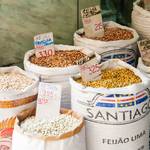
כמה עולה האוכל?

איך להגיע לפורטוגל?
